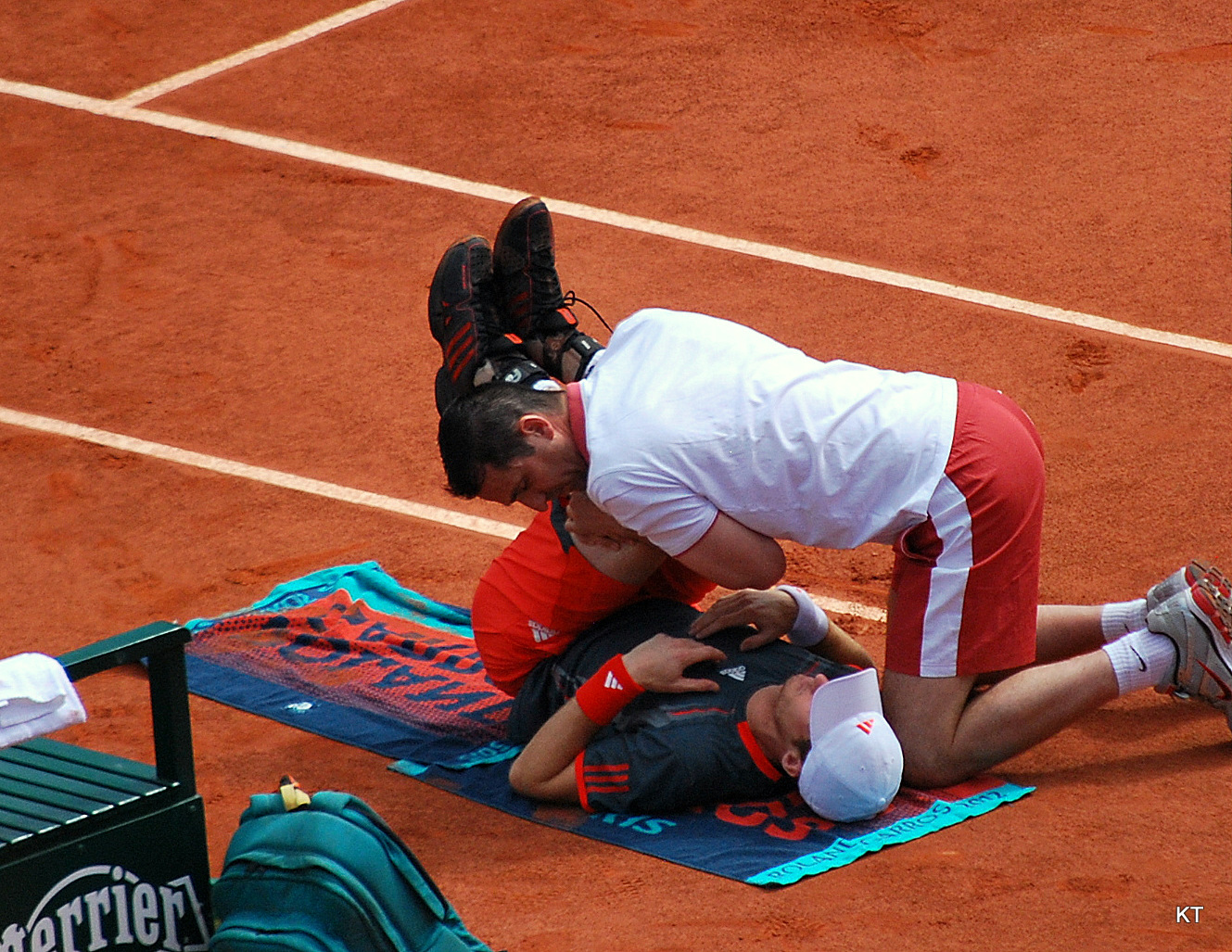As Roland Garros looms, an increasing number of reports claim that Rafael Nadal is facing a steady amount of injury ‘limitations‘. At 37 years old, the ‘King of Clay’ is tackling questions and fears surrounding his body’s capacity to continue playing tennis. In a similar state of precarity, a week ago, Andy Murray was spotted on his Instagram returning to the tennis court, newly-recovered from two damaged ligaments in his left ankle. Tennis is known for being high-impact on the body, catalysing the discussion around whether both Nadal and Murray are nearing their retirement from the sport. Yet, their defiance against their own physical clocks and injury risks actually exposes something else: a fear of life without sport.
Student-athletes also know this fear all too well and, yet, it is scarcely discussed. When hours of tireless travelling, training, and competing becomes your daily norm, one awkward slip, crunch, or click can send life into disarray.
Speaking to an OULTC member about their experience of sports injury, it presents a brutal reality:
“It’s hard to realise how much our bodies are relied upon to get through life: walking to the shops, joining social events, getting books from libraries… When this is all taken away, and you can’t even play the sport that you grew up loving, nothing’s much fun. You then feel so crazy about it happening to you in the first place – one moment you’re fine, and the next you feel a pop and your tendon has partially ruptured.”
Research in sports psychology emphasises that a ‘strong athletic identity could have certain benefits, such as sport commitment and motivation’, aiding confidence and organisation, ‘but that strong and exclusive athletic identity could be detrimental to athlete well-being at times of injury, de-selection, and career termination’ (Eubank et al., 2020). Psychological highs and lows are anticipated, yet unpredictable, and without proper access to sports physiotherapy, injuries can become increasingly long-term, with niggles lingering.
Speaking with a psychologist, sport’s psychological attraction lies in its ability to offer a unique opportunity for mental concentration and escape:
“You’re focusing on that specific moment: the ball coming towards you. Sport fosters an opportunity for connection with other team members and training partners, whilst simultaneously taking the emphasis away from competitive social interactions.”
While student sport has different demands to its professional equivalent, the psychological attachment and enjoyment to sport is comparable. For many athletes who begin training or are involved in sport before the age of ten, being abruptly forced out of such a familiar environment later in life can feel devastating. Sport is deeply intertwined with a drive to succeed and perform at your own highest level. With so much motivation and dedication being driven towards sports performance, it is no surprise that student and professional athletes struggle when a break is forced upon them.
Increasingly, sports psychology is addressing sports injuries in more than just a physical sense, tending to the psychological disturbances that occur with any major changes in daily life. Stress management techniques are seen as important contributors to positive outcomes in the injury rehabilitation phase. Progressive muscle relaxation and breathing exercises are considered significant factors in managing the stress and emotional fallout as a result of an injury event, and ‘[a] significant portion of rehabilitation involves establishing and adjusting goals’ that are flexible and aim to prevent frustration (Büttner et al., 2024). Prolonged absence from sports can also be alleviated through focused visualisation that engages multiple senses, imagining movements and exercises from sports or competition scenarios to re-engage with certain aspects of a sport that, for the moment, you might not be able to take part in. Yet, whether you’ve been involved in sport’s thrills for three years or 30, being forced to quit is a competitor’s worst nightmare.
Injury and, for professional athletes, cheeky retirement questions, have unsurprisingly elicited spiky responses in the media. A flurry of headlines conflict. Andy Murray airs his frustration that ‘no one is listening’ to him after stating that he is prepared to end his tennis career this summer. Meanwhile, Tim Henman encourages him to shut out the critics that say his time is already up, declaring that ‘[t]here’s plenty of time to be retired’. Between the demands of the body, age, and a life without the same intensity of sporting engagement, injuries most certainly provoke a fear of change and life without sport. However, there is, of course, more to life than sport (whether we like it or not). Finding alternative approaches to being involved in sport, enjoying new hobbies, and looking forward to all of the things that are still possible, are all proactive methods to ride out sports injuries or mourn the loss of playing sport altogether. It is clear that the saying that ‘athletes die twice’ needs a new approach. Whether the end of sport comes via professional retirement, injury, or both, there is always a period of mourning but, importantly, there is always a period of re-finding.



